|
|||||||||||||||||
|
|||||||||||||||||
| Before and After Building Exterior Images |
|
|
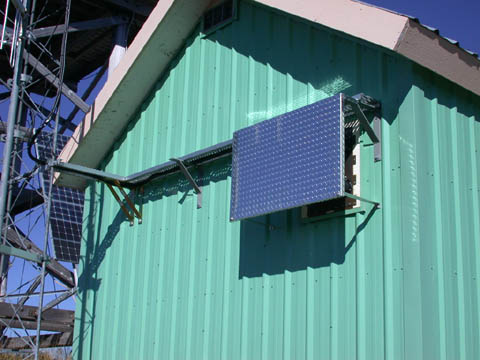 After: 9-22-2003 |
| Winter had taken it's toll as can be seen in the image on the left. Some exterior site design is based on past experience at the site in question. What works fine at one site may not work at another. Ice and wind seem to cause the most problems. As seen in the image on the right, we have fabricated an ice bridge and ice shield to aid in antenna coaxial cable management and protect the cables from the severe winter weather. Antenna mounting and coaxial cable routing on the tower underwent major changes to increase the structural integrity and provide a smooth coaxial cable transition into the ice bridge. Larry Gruber is inspecting solar array DC power building entrance in the image on the left. |
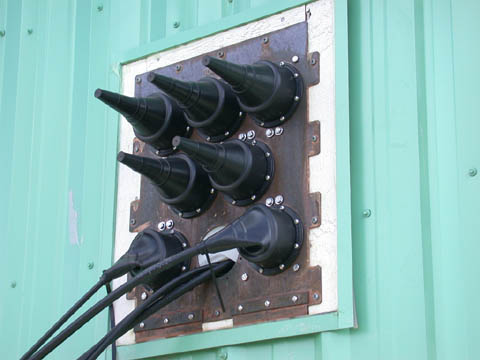 Before: 8-12-2003 |
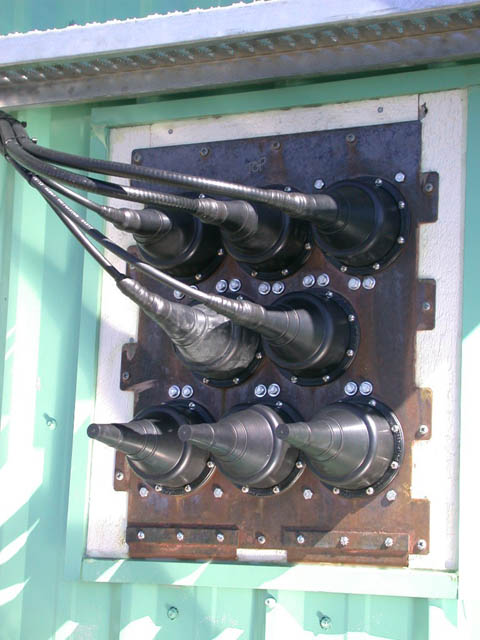 After: 9-22-2003 |
| Here we have completed the coaxial cable entrance panel work previously started. Initial work may have been interrupted by the weather as happens so often when working at mountain top elevations. |
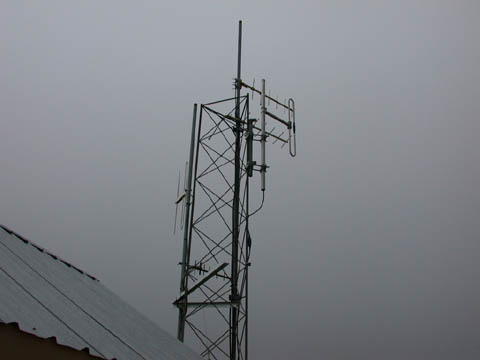 Before: 8-12-2003 |
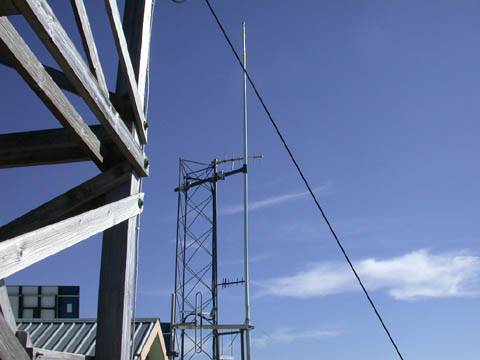 After: 8-28-2003 |
| Although difficult to distinguish, here are images from different angles of view of the original tower configuration and the updated configuration including a new fiberglass antenna. The old antenna was relocated on the tower with the coaxial cable remaining in place to aid in the transition to the new radio system (see next description). |
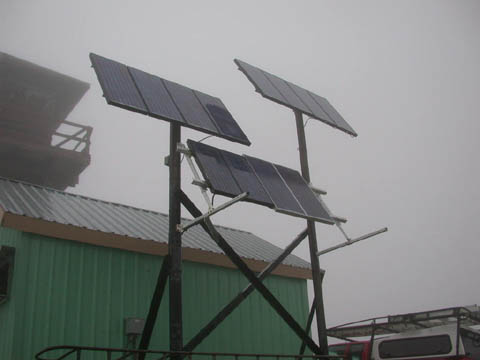 10-6-2003 |
As shown at the left, we have added a third solar array below the existing panels to charge a secondary battery bank. We are planning to transfer the current analog wideband (Area C) Eatonville repeater to this power source upon the installation of the new Daniels analog / digital repeater at the site. The new equipment will then be powered by the present power source used for the old equipment. In conjunction with the antenna configuration mentioned above, this will allow us to operate both the new and old repeaters simultaneously and provide a seamless transition to the new radio system in the event weather may not allow us access the radio site at the time the new system comes on line. September 2004 array update |
On our 10-08-03 visit to the Puyallup Ridge site, the weather did get a little nasty with 40-60 mph winds and rain mixed with a little snow. The view gets a little eerie at times as seen in the image at the right. The winds were strong enough to force water into the building between the floor and south wall. We were fortunate, however, no lighting accompanied the weather front as it passed through. |
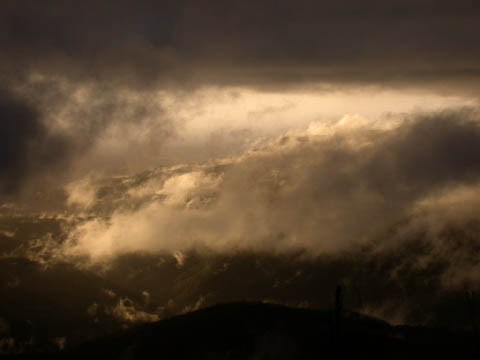 Wednesday Afternoon 10-8-2003 Looking West |
|
Puyallup Ridge - Current Status Highlights (Exterior) 10-8-2003 |
|
Completed |
Pending |
|
Fabrication of new antenna mounting and installation of new fiberglass antenna. Fabrication and installation of coaxial cable ice bridge and ice shield Completion of previously started exterior work at building entrance panel. Revise solar array DC cable routing at the arrays to reduce the potential of wind and ice damage. Addition of third solar array in preparation for changeover to new radio system. |
Site exterior ground system does not meet Motorola R-56 Class B Communications Site Standards. Although this is a serious deficiency, there may not be enough time available to correct the condition before winter. An attempt should be made to seal the south building wall where it meets the concrete pad supporting the solar arrays. Water accumulating on the pad can be forced under the wall into the building by strong winds. If the water were to freeze there is a potential for structural damage.Some tower coaxial cable will need replacement with semi-rigid cable such that proper grounding may be done to meet R-56 standards.Ice bridge will need to be isolated from the tower when the coaxial cable are replaced as mentioned in the paragraph above. DC power wiring from solar arrays needs to be reconfigured to allow the proper installation of lightning protection. Wiring presently enters the building on the south side and should be moved to an entry on the west side near the existing entrance panel. |